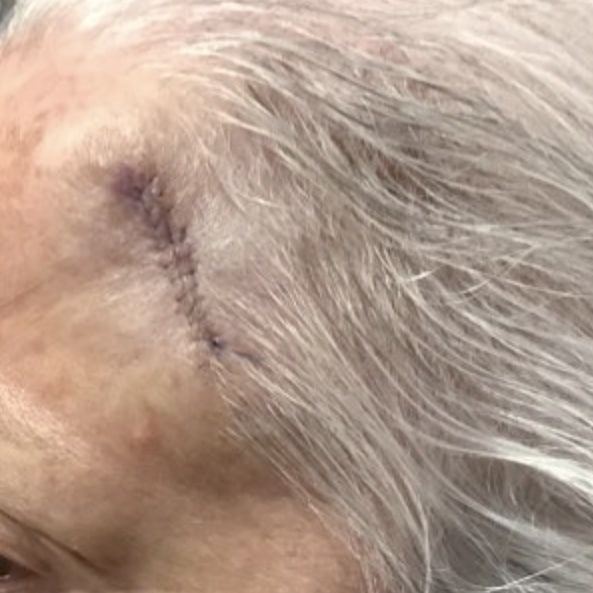What is a chemical peel and how does it work?
Chemical peels utilize an acid in a controlled manner to rejuvenate the skin. The chemical peel acts as an exfoliant to remove a specific amount of skin cells from the top layers of the skin, including imperfections in the process.
Peels speed up the process of cellular turnover in the skin by shedding the top layer of dead surface cells. After a peel, new, healthier-appearing cells regrow, restoring the skin’s surface and appearance.
What types of chemical peels can I use on my skin?
Your doctor will determine the best type of chemical peel based on your skin type and what the intended results are. The most common superficial chemical peels used are salicylic acid peels and glycolic acid peels. These peels come in various intensities.
Salicylic acid peels are often used to help improve acne, acne scars, clogged pores, and dyschromia/post-inflammatory hyperpigmentation.
Glycolic acid peels are often used for dyschromia/post-inflammatory hyperpigmentation, melasma, and improvement of overall skin texture.
What skin conditions can chemical peels improve?
Chemical peels of various strengths can help with acne-prone skin, fine lines and wrinkles, brown spots, precancerous spots, and sun damage. Chemical peels can also help rebuild collagen and resurface the skin.
What to expect on the day of your peel?
You can expect to follow the below steps if you get your chemical peel with the Dermatology of Philadelphia.
- First, you will be asked to wash your face and remove all makeup.
- Depending on the type of peel, your face may be treated with a specific pre-peel preparatory skin wipe.
- The chemical peel will then be gently applied to your face using an applicator, sometimes in multiple layers.
- Depending on the type of peel chosen, the peel will be left on your skin for 1-5 minutes.
- Some peels self-neutralize and some peels will be neutralized on your skin using a neutralizing solution, water, or neutralizing wipes.
- A skin recovery cream may be added to your skin after neutralization, followed by sunscreen.
Is a chemical peel painful?
Chemical peels are usually well tolerated. Often a cool air blower will be used to help with the discomfort. A peel can be stopped early if the peel process becomes too uncomfortable, but this is rarely required.
What should you do the week before your chemical peel?
Follow the below-recommended preparation steps to make the most of your chemical peel and help ensure a smooth process and great results.
- Discontinue the use of retinoids or Vitamin A products for 7 days
- Stop using exfoliants including glycolic acid washes or other chemical exfoliants. – Avoid facial scrubs
- Avoid facial waxing
- Avoid sun exposure without using a sunscreen of SPF 30 or higher
- Avoid tanning beds
What should you expect after your peel?
After a chemical peel, you can expect your skin to appear pink, red or tight for a few hours. Your skin can be more sensitive to temperature for a few days. You may have some itching as you experience some peeling for about 3-5 days. Some. Crusting can sometimes happen. If you do experience crusting you can apply Vaseline or Aquaphor Healing Ointment to the crusted areas. Some skin types are prone to hyperpigmentation (darkening of the skin) after peeling.
Please call the office if you are experiencing crusting or darkening of the skin.
What should you do after your peel?
You should wait a minimum of 2 hours before coming in contact with water and avoid strenuous exercise on the day of the procedure. For redness or discomfort after the peel, you can use gentle cool compresses. Makeup can be applied after 24 hours. You will likely be asked to use a recovery cream for 3-5 days after your peel.
You should avoid direct sunlight after your treatment. It is also important to wear broad spectrum SPF of at least SPF 45 for 7 days after your chemical peel.
Using a good moisturizer at night is recommended after a peel. You should also avoid scrubs, exfoliating products, and sponges for 7 days after a peel. You can resume retinoids after the peeling has stopped. Vitamin C and other serums can be used 72 hours after a chemical peel if there is no crusting or irritation.
For more information about our chemical peels and other cosmetic dermatology services, click here!





